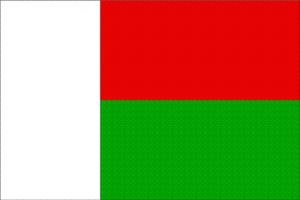Difference between revisions of "Language/Plateau-malagasy/Grammar/Regular-Verbs"
m (Quick edit) |
m (Quick edit) |
||
| Line 162: | Line 162: | ||
[[Category:Plateau-malagasy-0-to-A1-Course]] | [[Category:Plateau-malagasy-0-to-A1-Course]] | ||
<span gpt></span> <span model=gpt-3.5-turbo></span> <span temperature=1></span> | <span gpt></span> <span model=gpt-3.5-turbo></span> <span temperature=1></span> | ||
==Other Lessons== | |||
* [[Language/Plateau-malagasy/Grammar/Irregular-Verbs|Irregular Verbs]] | |||
* [[Language/Plateau-malagasy/Grammar/Comparative-and-Superlative-Adjectives|Comparative and Superlative Adjectives]] | |||
* [[Language/Plateau-malagasy/Grammar/Pronouns-and-Their-Usage|Pronouns and Their Usage]] | |||
* [[Language/Plateau-malagasy/Grammar/Adjectives|Adjectives]] | |||
* [[Language/Plateau-malagasy/Grammar/Adverbs-and-Their-Usage|Adverbs and Their Usage]] | |||
* [[Language/Plateau-malagasy/Grammar/Gender|Gender]] | |||
* [[Language/Plateau-malagasy/Grammar/Conditional-Mood|Conditional Mood]] | |||
* [[Language/Plateau-malagasy/Grammar/Plurals|Plurals]] | |||
* [[Language/Plateau-malagasy/Grammar/Present,-Past,-and-Future-Tenses|Present, Past, and Future Tenses]] | |||
* [[Language/Plateau-malagasy/Grammar/How-to-Use-Have|How to Use Have]] | |||
{{Plateau-malagasy-Page-Bottom}} | {{Plateau-malagasy-Page-Bottom}} | ||
<span links></span> | <span links></span> | ||
Revision as of 21:34, 2 April 2023
Regular Verbs in Plateau Malagasy
Congratulations on reaching the lesson on Regular Verbs in Plateau Malagasy! This is an important topic, as verbs are the core of any sentence and enable us to describe actions and states. In this lesson, we will learn about regular verbs in Plateau Malagasy, including their conjugation and some common examples.
What are Regular Verbs?
Before we dive into Plateau Malagasy verb conjugation, let's start by defining what a verb is. In the simplest terms, a verb is a word that describes an action or a state. For example, in the sentence "Lalao aho" ("I play"), the word "lalao" ("play") is a verb that describes an action.
In Plateau Malagasy, there are two types of verbs: regular and irregular. Regular verbs follow a predictable pattern of conjugation, meaning that their verb endings do not change much regardless of the subject. On the other hand, irregular verbs don't follow a fixed pattern and are conjugated differently depending on the subject.
For this lesson, we'll focus on regular verbs in Plateau Malagasy. We'll look at the three basic verb tenses (present, past, and future), and how to form and use them.
Conjugation of Regular Verbs
In Plateau Malagasy, regular verbs are formed by adding affixes to the verb root. Depending on the subject pronoun, the affixes added to the verb root vary.
Here is the conjugation of the verb "hifampiditra" ("to enter [together]") in the present tense:
| Subject | Affixes | Conjugated Verb |
|---|---|---|
| Aho | mi- | mifampiditra |
| Ianao | mi- | mifampiditra |
| Izy | mi- | mifampiditra |
| Izahay | mi- | mifampiditra |
| Izy ireo | mi- | mifampiditra |
| Ireo | mi- | mifampiditra |
As you can see, the affix "mi-" is added to the verb root "fampiditra" to form the present tense. The affix "mi-" is replaced by other affixes depending on the tense and the subject pronoun.
Here is the conjugation of the verb "hifampiditra" ("to enter [together]") in the past tense:
| Subject | Affixes | Conjugated Verb |
|---|---|---|
| Aho | ni- | nifampiditra |
| Ianao | ni- | nifampiditra |
| Izy | ni- | nifampiditra |
| Izahay | ni- | nifampiditra |
| Izy ireo | ni- | nifampiditra |
| Ireo | ni- | nifampiditra |
As you can see, the affix "ni-" is added to the verb root "fampiditra" to form the past tense.
Finally, here is the conjugation of the verb "hifampiditra" ("to enter [together]") in the future tense:
| Subject | Affixes | Conjugated Verb |
|---|---|---|
| Aho | ho- | hifampiditra |
| Ianao | ho- | hifampiditra |
| Izy | ho- | hifampiditra |
| Izahay | ho- | hifampiditra |
| Izy ireo | ho- | hifampiditra |
| Ireo | ho- | hifampiditra |
As you can see, the affix "ho-" is added to the verb root "fampiditra" to form the future tense.
Common Examples of Regular Verbs
Now that we've gone through the basic conjugation of regular verbs in Plateau Malagasy let's look at some common examples:
- Mifona ("to live") - This verb is intransitive and means "to live". Here is its present tense conjugation:
- Maminavina ("to understand") - This verb is transitive and means "to understand". Here is its present tense conjugation:
- Manao ("to do") - This verb is transitive and means "to do". Here is its present tense conjugation:
| Subject | Affixes | Conjugated Verb |
|---|---|---|
| Aho | mi- | mifona |
| Ianao | mi- | mifona |
| Izy | mi- | mifona |
| Izahay | mi- | mifona |
| Izy ireo | mi- | mifona |
| Ireo | mi- | mifona |
| Subject | Affixes | Conjugated Verb |
|---|---|---|
| Aho | mi- | mamimavina |
| Ianao | mi- | maminavinao |
| Izy | mi- | maminavina |
| Izahay | mi- | maminavinay |
| Izy ireo | mi- | maminavina |
| Ireo | mi- | maminavinay |
| Subject | Affixes | Conjugated Verb |
|---|---|---|
| Aho | mi- | manao |
| Ianao | mi- | manaona |
| Izy | mi- | mana |
| Izahay | mi- | manao isika |
| Izy ireo | mi- | mana |
| Ireo | mi- | manao isika |
Conclusion
Congratulations again on reaching the end of this lesson on regular verbs in Plateau Malagasy! By now, you should have a good understanding of the basic conjugation of regular verbs in Plateau Malagasy and some common examples. Remember, practice is key to mastering any language, so be sure to practice conjugating regular verbs in different tenses with different subjects.
Congratulations on finishing this lesson! Explore these related pages to keep learning: Conditional Mood & Irregular Verbs.
